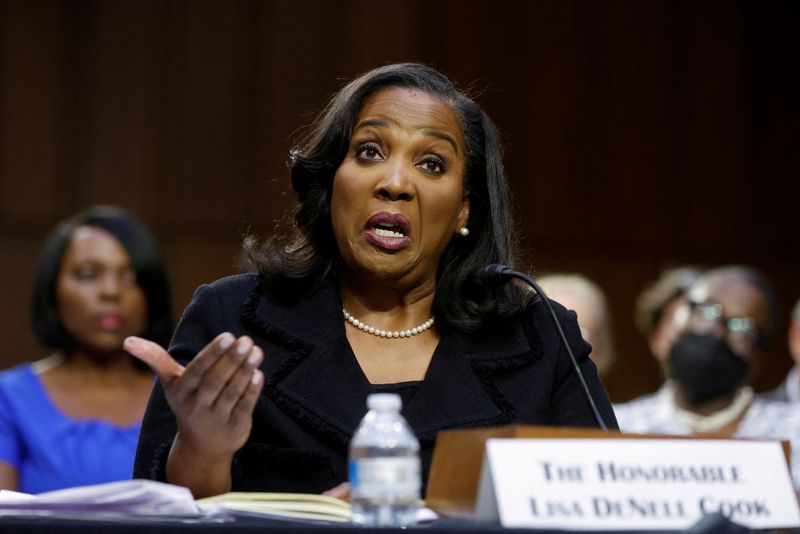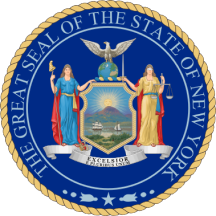
By Howard Schneider
WASHINGTON (Reuters) -The Federal Reserve may have been late raising interest rates as inflation surged in 2021, but measures of inflation expectations throughout that period showed broad belief that prices would cool, a fact that made the battle easier and less costly to wage, with bond markets even tightening financial conditions well before the U.S. central bank hiked borrowing costs.
In a paper presented to global central bankers at a Fed conference in Wyoming on Saturday, Emi Nakamura, an economics professor at the University of California, Berkeley, said the episode showed the value of Fed credibility in action, and also the stakes on the table if that trust is eroded - a no-longer abstract risk after President Donald Trump moved on Monday to fire Fed Governor Lisa Cook in the first such move by a U.S. chief executive.
"It's easy to forget how remarkable it was that the Fed was able to look through 7% to 8% inflation while maintaining almost completely anchored long-term inflation expectations. This requires (an) extremely strong reputation," Nakamura said, something that hinges "on institutions like central bank independence and a strong track record, and those are things that take a long time to build up and perhaps not very long to destroy."
The immediate market reaction to the announced firing of Cook has been tame so far, but analysts feel the seeds of lost faith have been planted even if it remains uncertain how quickly that will matter to policy decisions or market pricing. Trump may not succeed in removing Cook, for instance, which could strengthen the Fed's standing. Reactions in the U.S. Senate, which confirms the president's appointments to the Fed and where members of both parties typically voice strong support for central bank independence, could also be important.
For now Fed policymakers are expected to begin cutting interest rates at their September 16-17 meeting, and Cook has said she intends to continue participating.
Still, "it's a huge attack on the Fed's efficacy as an independent agency, which of course is the basis for achieving its price stability mandate," said Maurice Obstfeld, a professor of economics emeritus at the University of California, Berkeley and a former chief economist at the International Monetary Fund.
"It's going to make it harder for the central bank to achieve its other prime responsibility, which is supporting employment in the economy, without possibly destabilizing expectations of inflation," he said. "The markets will understand that monetary policy decisions are likely to be more politically motivated, and the central bank will be perceived more broadly as being more focused on other goals of the administration, for example, financing our large fiscal deficit."
Trump has insisted on lower interest rates because he feels it would make it cheaper for the government to finance its large deficits, an idea that could go awry in practice if markets lose faith in inflation control and add a steeper inflation premium to bids on U.S. government debt.
'HE HAS NO AUTHORITY'
The resilience of the Fed's reputation and independence in the face of a determined chief executive has never been fully tested since the central bank was established in its current form, with a series of reforms enacted by Congress in the 1930s, in what historians say was an explicit move to distance monetary policy from White House control.
Key features of this arrangement include long 14-year terms for members of the Washington-based Board of Governors and a division of power between the board and the presidents of 12 regional Fed banks that reflects the federal structure of other parts of the U.S. government. It is rooted in the idea that elected officials are less likely to make the hard and unpopular decisions sometimes needed to control inflation than independent experts prioritizing data and analysis over election outcomes.
It is also a setup that has frustrated Trump and his administration's expansive view of executive power. After failing to pressure the Fed to lower rates since his return to the White House in January, Trump on Monday said a controversy over two residential mortgage loans taken out by Cook before she joined the central bank gave him "cause" to fire her.
Supporters of Cook, who is also the first Black woman to serve as a Fed governor, note that her term runs until 2038, far outlasting Trump's, as do the terms of two other governors appointed by former President Joe Biden. While Trump can name a new Fed chief to take over when Jerome Powell's term ends in May, as it stands the president may lack a majority of his own appointees on the board until 2028, his last full year in office, a barrier to his effort to reshape the central bank.
Even then, there's no guarantee that the central bank's governors who have passed Senate scrutiny would agree to any White House demands, with the separately hired Fed regional bank presidents also involved in policy decisions.
Cook's mortgage issue has been referred to the U.S. Justice Department, but so far no formal action has been taken. In an emailed statement on Monday night, Cook said of Trump that "no cause exists under the law, and he has no authority" to remove her from the board. Cook's lawyer, prominent Washington attorney Abbe Lowell, said "we will take whatever actions are needed to prevent his attempted illegal action."
What follows could be an important test of whether the U.S. central bank's independence over monetary policy has been more a matter of practice and protocol than actual legal protection, and in turn a test of how important that independence is to U.S. and global financial markets that have viewed the Fed as a stabilizing influence and central pillar of the world's financial architecture.
During crises, for example, the Fed has acted quickly to calm markets with programs that have crossed borders without political constraints, using "swap" lines and other tools to be sure other central banks had access to dollars they and their local companies might need.
The Federal Reserve Act does allow a governor to be removed for "cause," but does not try to define what that means. The U.S. Supreme Court, in a recent similar dispute, did seem to carve out an exemption for the Fed that would prevent removal of a governor in a dispute simply about rates.
But those were not yet full decisions, noted Kathryn Judge, a law professor at Columbia University, with much about the Fed's status still to be decided.
"The law here is under-developed because we have never had to rely on the formal law alone to protect Fed independence. Although a number of presidents have put pressure on Fed chairs, we have never faced a situation where a president has tried to fire a Fed governor," Judge said. "If the president is willing to pull out all of the stops and use an aggressive reading of his inherent authority under Article II (of the U.S. Constitution) to pressure the Fed to follow his lead on monetary policy, it is unlikely to remain independent."
(Reporting by Howard Schneider; Additional reporting by Ann Saphir; Editing by Paul Simao)

 Reuters US Business
Reuters US Business
 Local News in New York
Local News in New York America News
America News Associated Press Top News
Associated Press Top News Raw Story
Raw Story AlterNet
AlterNet Associated Press US and World News Video
Associated Press US and World News Video CNN
CNN